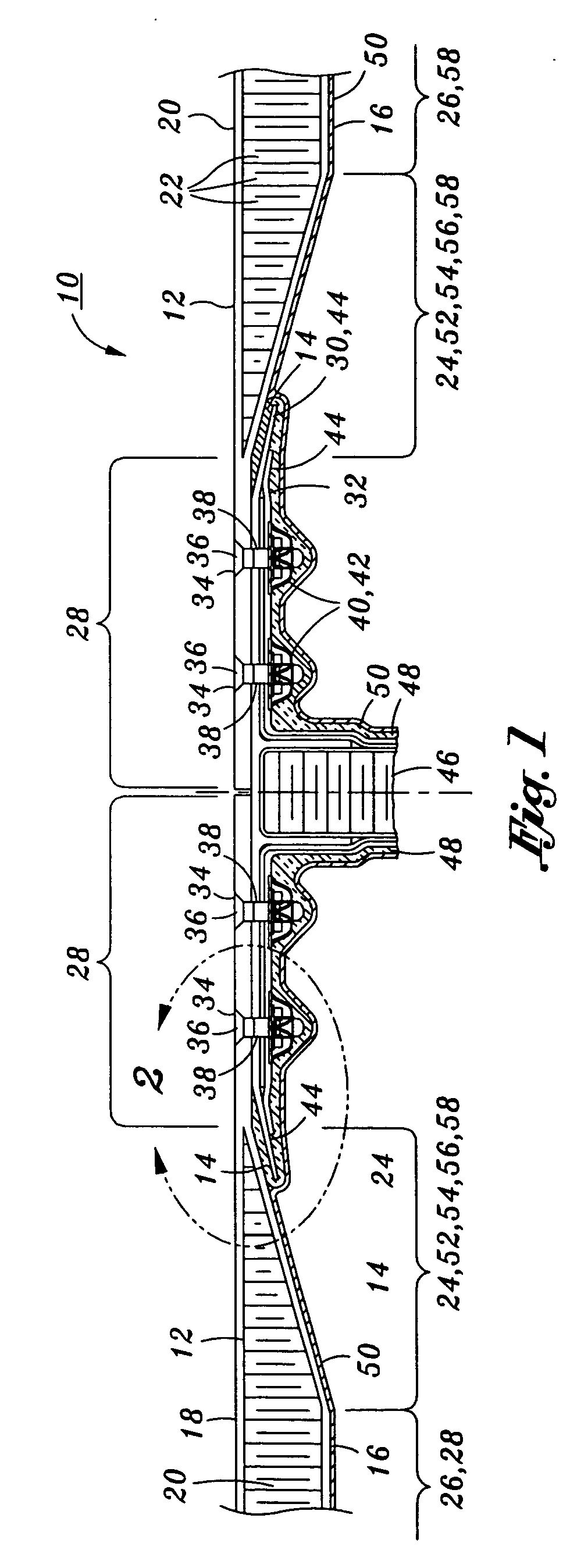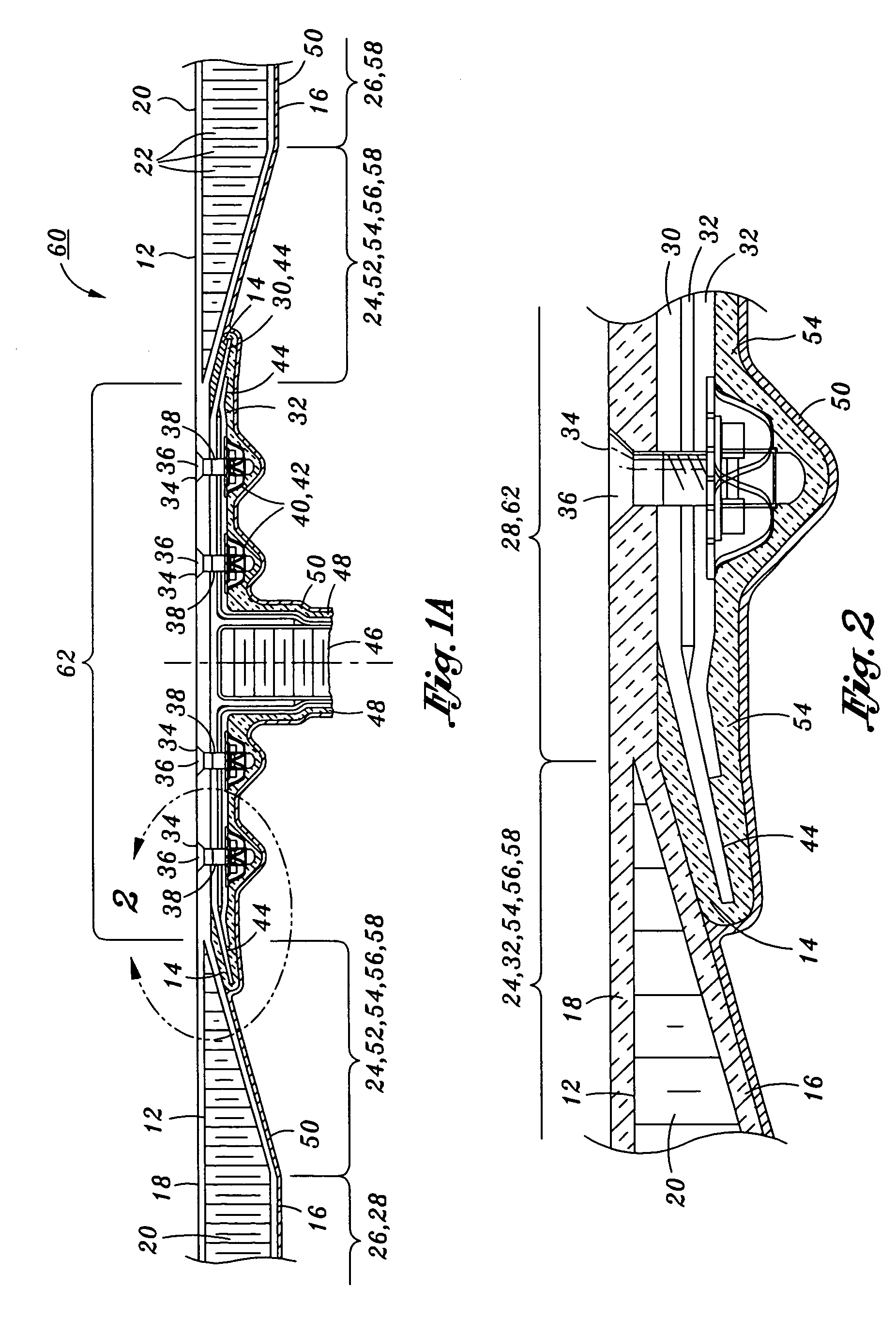Thermally insulated structure - tapered joint concept
- Summary
- Abstract
- Description
- Claims
- Application Information
AI Technical Summary
Benefits of technology
Problems solved by technology
Method used
Image
Examples
Embodiment Construction
[0026] Referring now to the drawings wherein the showings are for purposes of illustrating the present invention and not for purposes of limiting the same, provided is a composite joint 10 which is specifically adapted to minimize heat conduction between an exterior of the composite joint 10 to an interior thereof.
[0027] It should be noted that the present invention may be configured as a composite joint as shown in FIG. 1 or as a composite structure as shown in FIG. 1a. The composite joint shown in FIG. 1 comprises a pair of adjoining composite panels and a primary splice plate. The primary splice plate is configured to connect the composite panels with at least one mechanical fastener extending through each of the composite panels and through the primary splice plate. Importantly, the composite joint includes a layer of thermal barrier compound covering the primary splice plate. The thermal barrier compound may also extend beyond the primary splice plate and may partially overlap...
PUM
| Property | Measurement | Unit |
|---|---|---|
| Thickness | aaaaa | aaaaa |
| Structure | aaaaa | aaaaa |
| Thermal properties | aaaaa | aaaaa |
Abstract
Description
Claims
Application Information
 Login to View More
Login to View More - R&D
- Intellectual Property
- Life Sciences
- Materials
- Tech Scout
- Unparalleled Data Quality
- Higher Quality Content
- 60% Fewer Hallucinations
Browse by: Latest US Patents, China's latest patents, Technical Efficacy Thesaurus, Application Domain, Technology Topic, Popular Technical Reports.
© 2025 PatSnap. All rights reserved.Legal|Privacy policy|Modern Slavery Act Transparency Statement|Sitemap|About US| Contact US: help@patsnap.com



